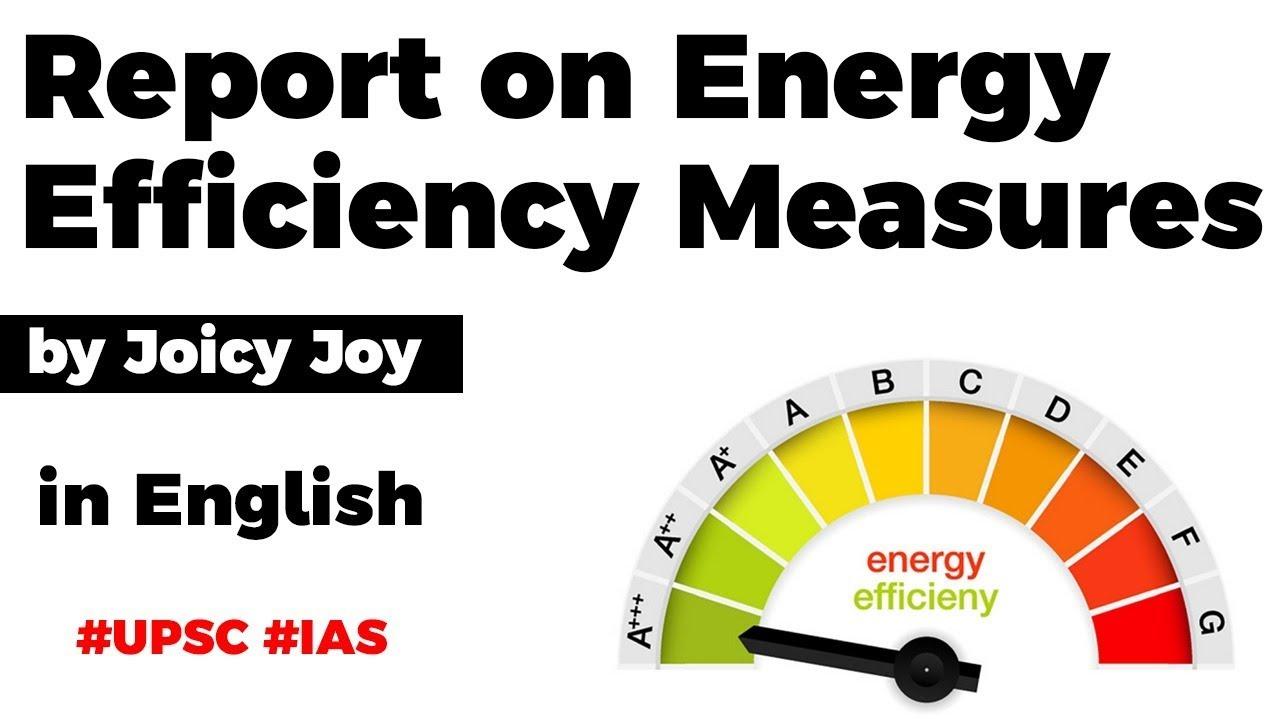Table of Contents
- Recently the Ministry of Power and New & Renewable Energy released a report on the “Impact of energy efficiency measures for the year 2018-19”.
- The report was prepared by a third party agency PWC Ltd, who was engaged by Bureau of Energy efficiency (BEE).
- Methodology: Since 2017-18, every year BEE has been appointing a third party expert agency which compares the estimated and actual energy consumption due to various energy efficiency schemes.
- The study assesses the resultant impact of current schemes at national as well as state level for the financial year and compares it with a situation where the same were not implemented.
- Objective:
- To evaluate the performance and impact of all the key energy efficiency programmes in India, in terms of total energy saved and the related reduction in the CO2 emissions.
Findings
- Electricity Saving:
- Implementation of various energy efficiency schemes have led to total electricity savings to the tune of 113.16 Billion Units in 2018-19, which is 9.39% of the net electricity consumption.
- Energy Saving:
- The total energy savings achieved in 2018-19 is 23.73 Mtoe (million Tonne of Oil Equivalent), which is 2.69% of the total primary energy supply (estimated to be 879.23 Mtoe in India).
- Emission Reduction:
- These efforts have also contributed in reducing 151.74 Million Tonnes of CO2 emissions, whereas last year this number was 108 Million Tonnes of CO2.
- This year the study has identified the following major programmes, viz. Perform, Achieve and Trade Scheme, Standards & Labelling Programme, UJALA Programme, Municipal Demand Side Management Programme.
Perform, Achieve and Trade Scheme
- It is a market-based mechanism to further accelerate as well as incentivize energy efficiency in the large energy-intensive industries.
- The Energy Savings Certificates (ESCerts) were introduced in India in 2011 under the Perform, Achieve Trade scheme (PAT) by the Bureau of Energy Efficiency (BEE) under the National Mission of Energy Efficiency.
- This market- based mechanism is facilitated through the trading of Energy Savings Certificates (ESCerts) which are issued to those plants who have overachieved their targets.
Standards & Labelling Programme
- A key objective of this programme by BEE is to provide the consumer an informed choice about the energy saving and thereby the cost saving potential of the relevant marketed product.
- The programme targets display of energy performance labels on high energy end use equipment & appliances and lays down minimum energy performance standards.
Unnat Jyoti by Affordable LEDs for All (UJALA)
- It was launched in 2015 with a target of replacing 77 crore incandescent lamps with LED bulbs and to nullify the high-cost of LEDs.
- The scheme was implemented to set up a phase-wise LED distribution.
- The objective is to promote efficient lighting, enhance awareness on using efficient equipment that will reduce electricity bills and preserve the environment.
- It is the world’s largest domestic lighting project.
Municipal Demand Side Management Programme
- The Municipality Demand Side Management (Mu-DSM) programme of BEE was initiated during the Eleventh five year plan(2007-2012).
- The basic objective of the project is to improve the overall energy efficiency of the Urban Local Bodies (ULBs), which could lead to substantial savings in the electricity consumption, thereby resulting in cost reduction/savings for the ULBs.
Latest Burning Issues | Free PDF






















 WhatsApp
WhatsApp